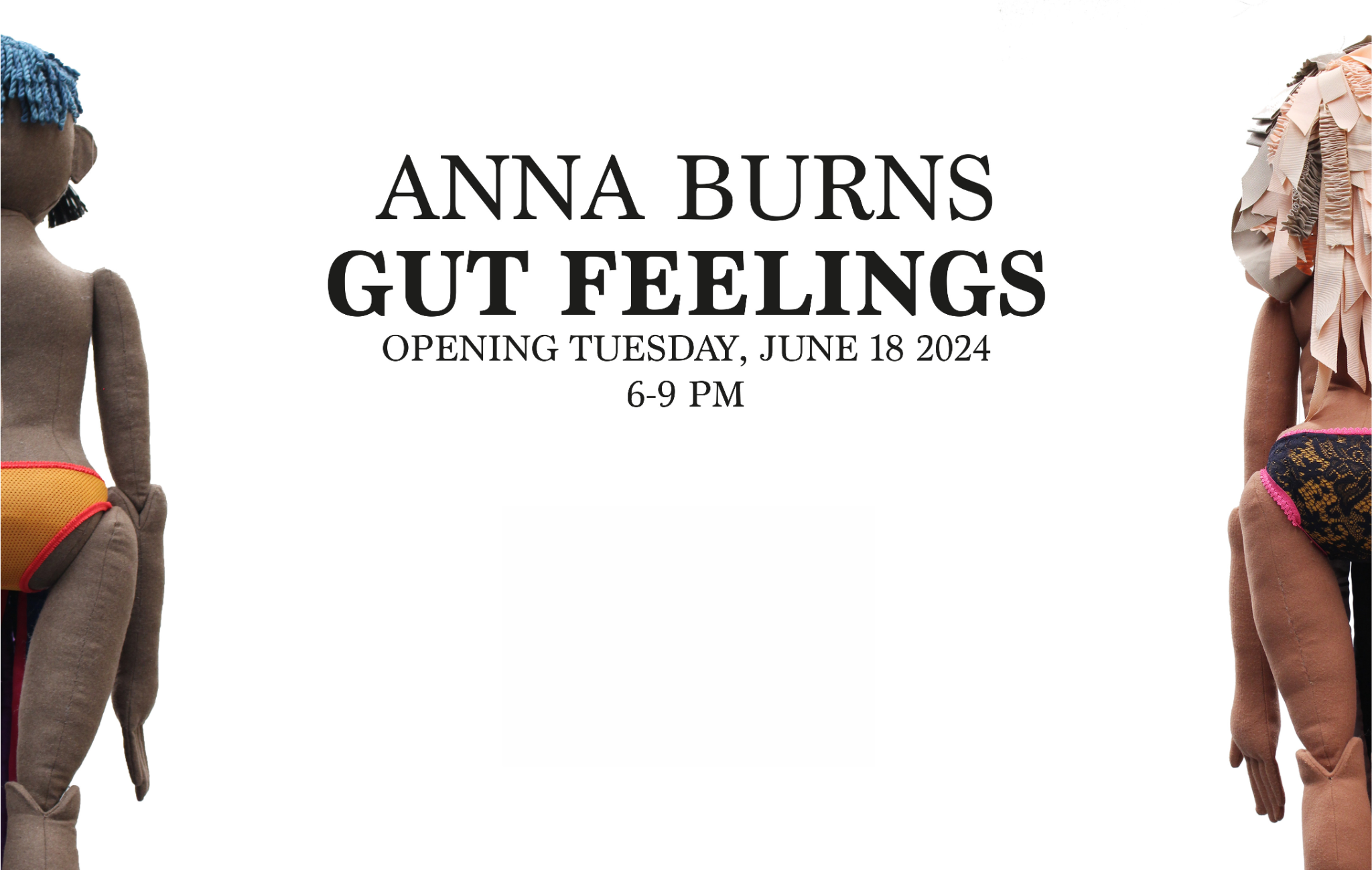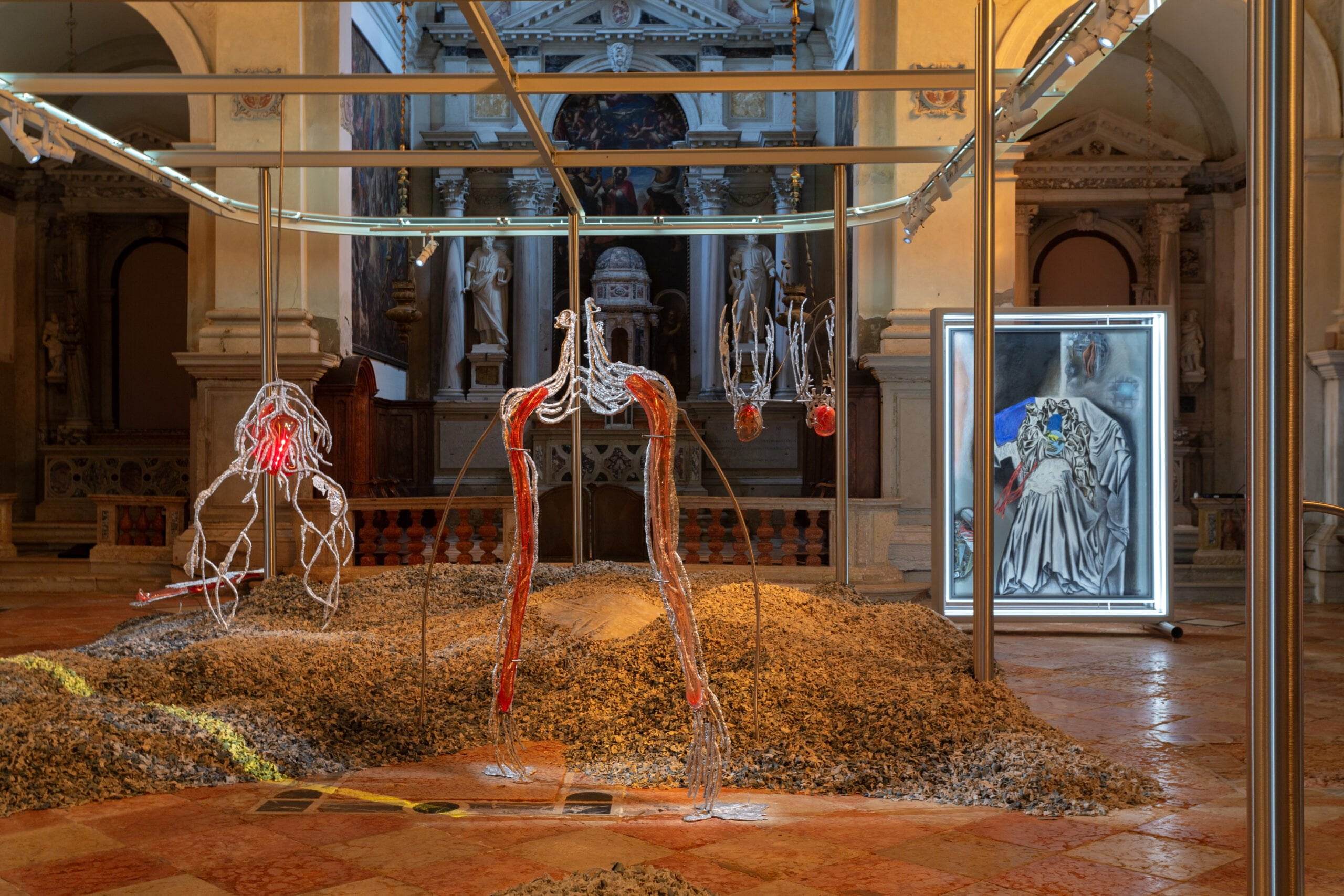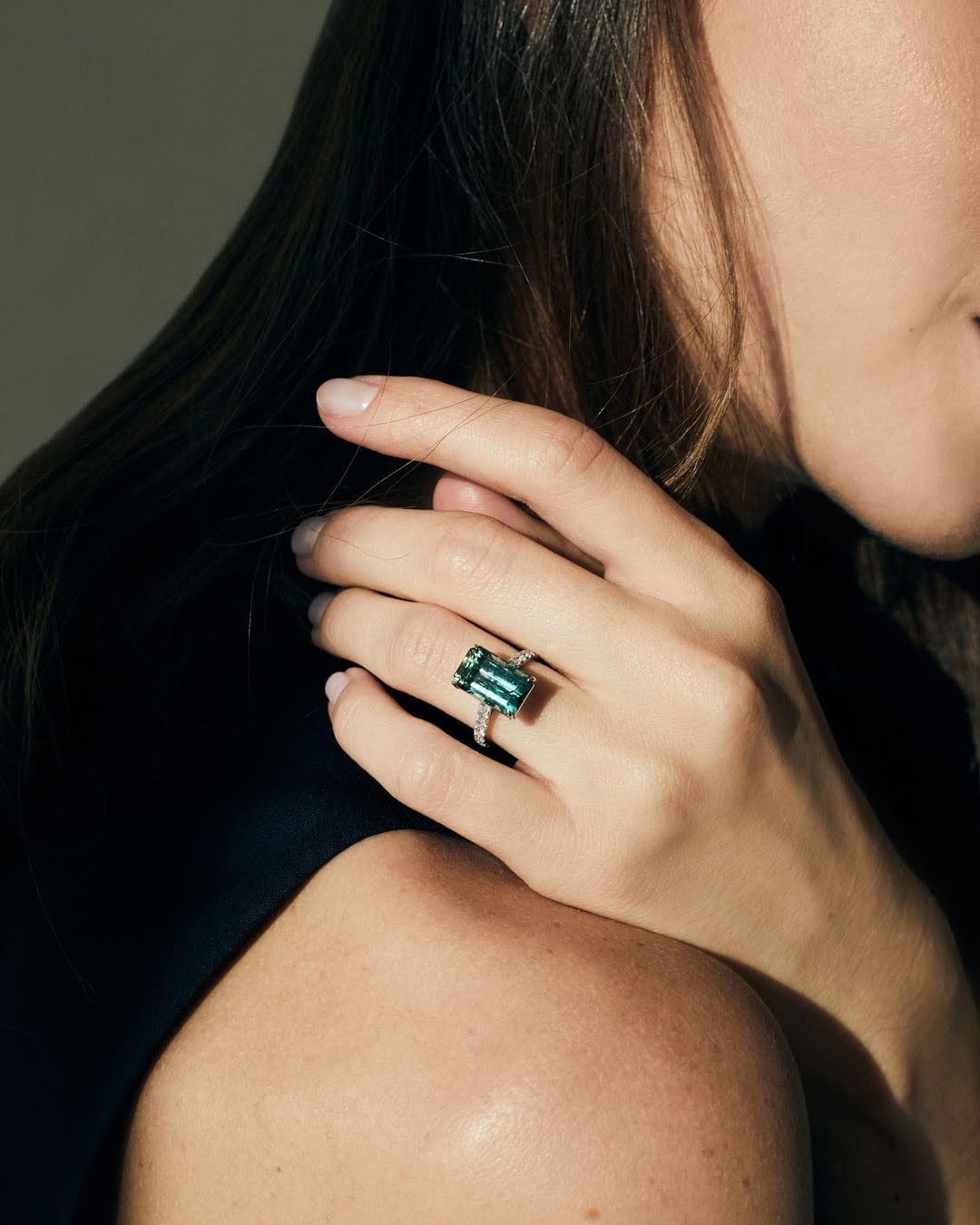Interactive “Planet of Humans” Installation by Julijonas Urbonas Wows Visitors at the Venice Architecture Biennale
“You can travel to one of the planets now”: Impressions of Julijonas Urbonas’ Cosmic Architecture Project
“Julijonas Urbonas’ ‘Planet of Humans’ is a dizzying and terrifying vision of the future,” says art critic, curator, and writer Laima Kreivytė. Until February 25, the Lithuanian National Museum of Art invites visitors to one of its branches – the Museum of Applied Arts and Design – to experience the interactive installation that captivated visitors at the Venice Architecture Biennale. The installation has also impressed those who visited it in Vilnius.
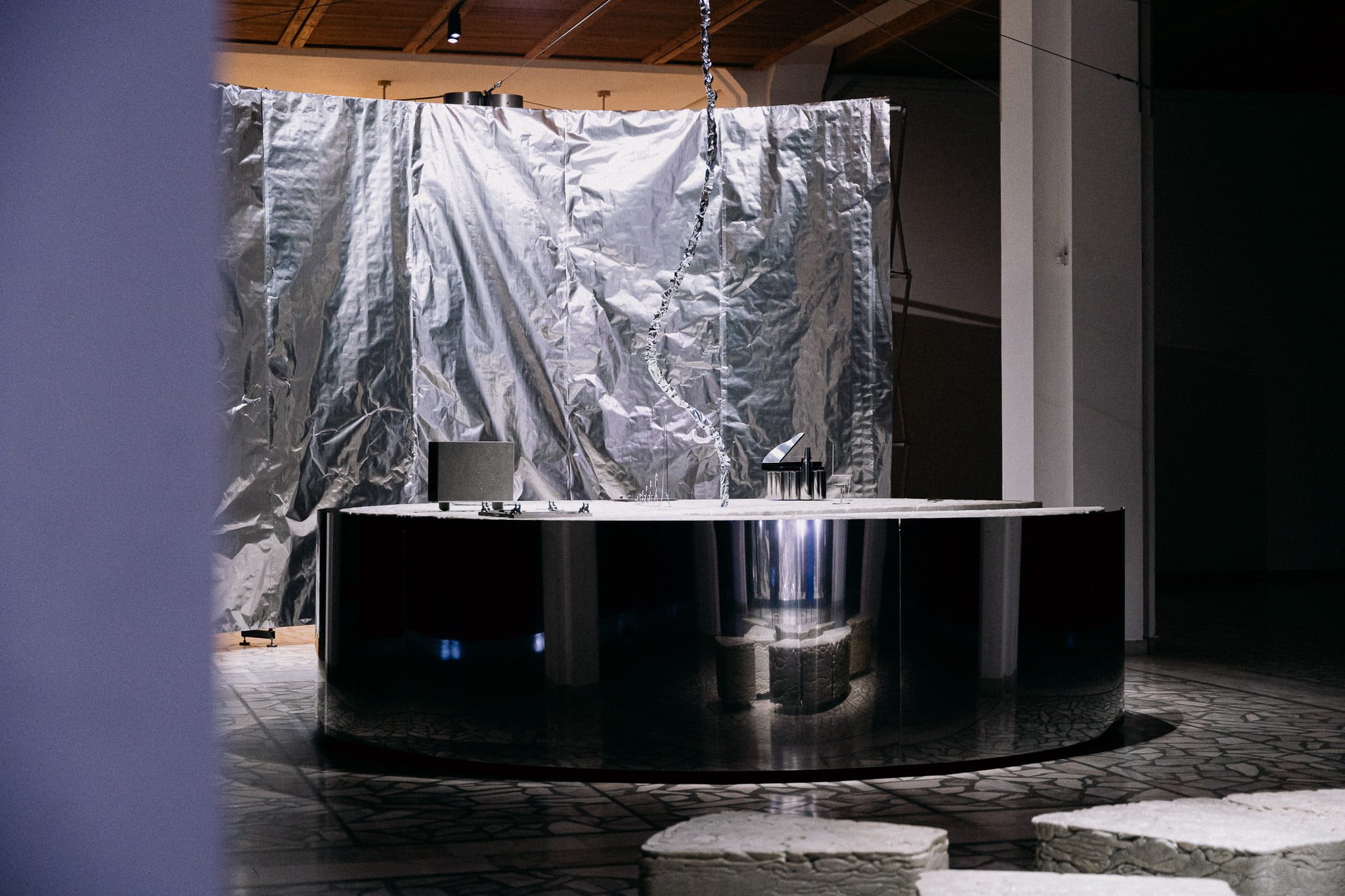
Nuotraukos šaltinis: Suprasti madą
In collaboration with the Lithuanian Space Agency (LEA), artist Julijonas Urbonas presented the project “Planet of Humans” at the 17th Venice Architecture Biennale. A few years ago, this hypothetical planet took shape in Melbourne’s Science Gallery in Australia, and since last spring, the interactive installation can be visited in Vilnius. The artwork, donated to the Lithuanian National Museum of Art, has been visited by over ten thousand people, including representatives from various disciplines, scientists, and experts.
“I am pleased that Julijonas Urbonas’ ‘Planet of Humans’ has attracted significant attention in the special space of the Old Arsenal. The installation invites reflection on urgent issues of climate change, creativity, and ingenuity, or simply to experience the artwork and become part of it by playfully immersing oneself in a virtual future planet,” says Dr. Arūnas Gelūnas, Director of the Lithuanian National Museum of Art.
“Our bodies are the building material of a future planet. Perhaps this always happens, and after death, we do not go to heaven or hell but to another planet? However, this planet made of humans can be visited right now by anyone. It’s worth a try!” shares L. Kreivytė. In her LRT Classic radio show “From the Balcony,” the art critic compares this vision of Urbonas’ “Planet of Humans” with an interwar idea by Kazys Pakštas to relocate Lithuania to Madagascar: “Pakštas’ vision lacked ambition; Lithuania should have been sent to space right away,” jokes L. Kreivytė.

Source: Suprasti madą
One of the rooms in the Museum of Applied Arts and Design currently houses the LEA laboratory. Here, visitors are invited to enter a specially programmed scanner device and scan themselves in a chosen choreographic pose. The three-dimensional scans are transferred to an astrophysical simulation of one of the Lagrange points in space, and on nearby screens, visitors can see the forming clump and themselves as co-creators of a new celestial body.
According to Dr. Gytis Dudas, a virologist at Vilnius University’s Life Sciences Center, there aren’t many art projects that allow you to become part of them. “Planet of Humans” invites you to defy Earth’s gravity, think about space and time, and ultimately surpass yourself and become part of a larger whole in various senses. Depending on the data cleaning frequency, those who scanned themselves with friends from abroad last summer are probably still orbiting and have become part of the largest entity in the project – the Planet of Humans. It’s worth visiting. It’s worth joining. It’s worth orbiting,” says G. Dudas.
Though the project encourages contemplation of current aesthetic, ethical, and political issues related to space, it also touches on questions of architectural imagination. According to architect Andrius Ropolas, this interactive installation gives new, extreme meanings to the currently discussed topic of humanizing the environment in the field of architecture: “Now, when everyone talks about cities for people, architecture for people, everything for people, Julijonas Urbonas says in this context – then let’s build a planet out of people? – thus proposing the highest possible level of environmental humanization and humanity.”
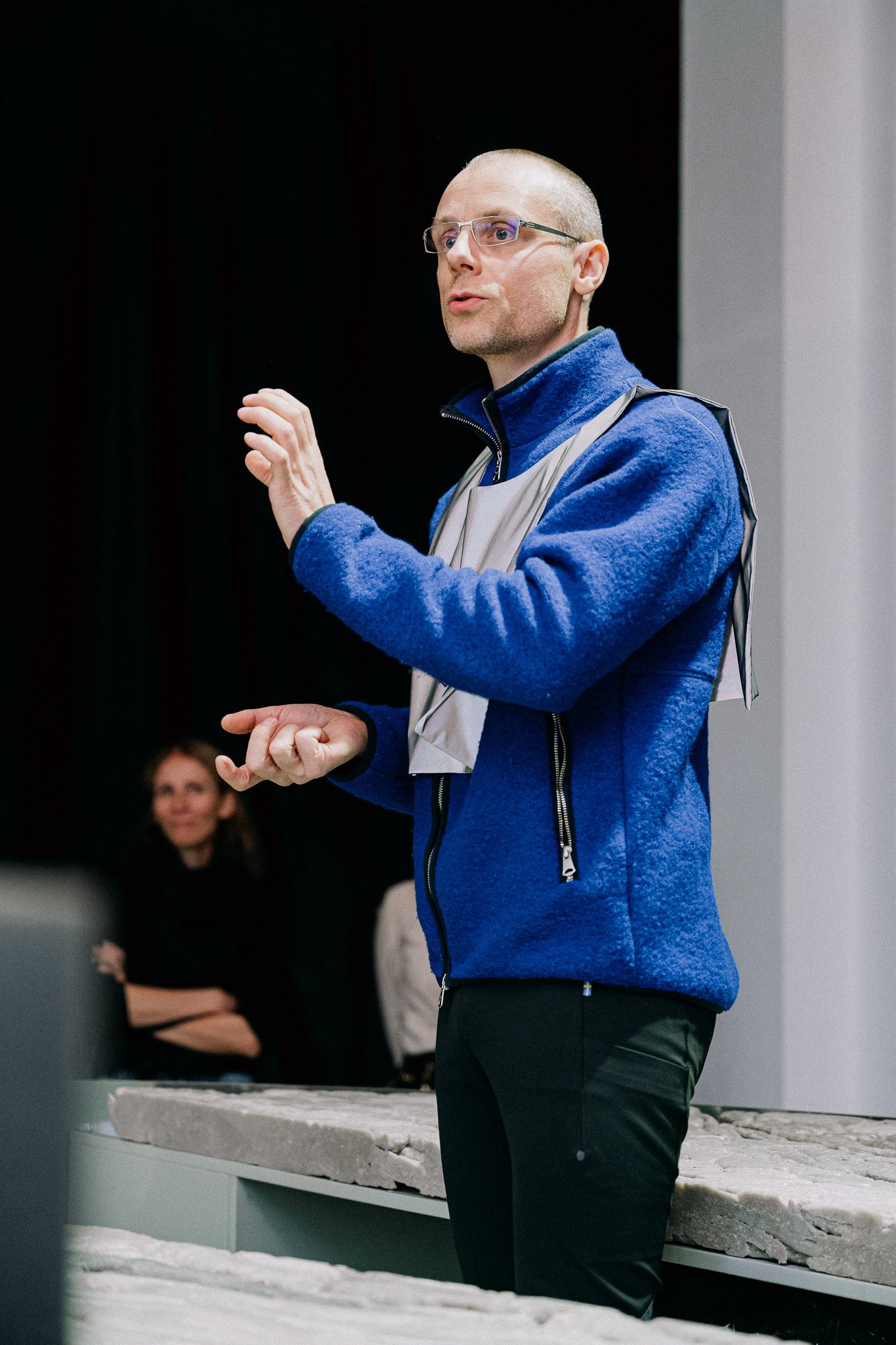
Source: Suprasti madą
Science popularizer and educator Goda Raibytė-Aleksa calls Urbonas’ projects true science fiction: “I have always been fascinated by Julijonas’ work – especially his ability to combine science and art, creating utopian and dystopian concepts that pleasantly ‘tickle’ the brain. When ‘Planet of Humans’ arrived in Lithuania, I hurried to the exhibition to experience it myself. I loved the implementation, the opportunity to become part of the forming hypothetical planet. If one day ‘Planet of Humans’ becomes a reality, we will all participate in it. I especially recommend it to those who find space distant and uninteresting – I am sure that after this exhibition, you will want to read and learn more.”
Visitors are invited to explore how this astrophysical fiction would be realized and briefly forget their earthly nature by transferring their bodies into cosmic nothingness until February 25.

Source: Suprasti madą
Curator and Artist: Julijonas Urbonas
Architects: Isora x Lozuraityte Studio for Architecture (Petras Išora and Ona Lozuraitytė)
Modular Structure Designer: Vladas Suncovas
Graphic Designers, 3D Scanner Programmers: Studio Pointer* (Asya Sukhorukova and Jakob Schlötteris)
Producer: Mindaugas Reklaitis
Ticket Machine Programmer: Andrius Mikonis
Project Prototype Designer: Paulius Vitkauskas
Partner: Vilnius Academy of Arts
Information Partners: LRT, Mediatraffic
—
Julijonas Urbonas is an artist, designer, researcher, and engineer, founder of the Lithuanian Space Agency. He has also served as Vice-Rector for Art at the Vilnius Academy of Arts and was the director of the Klaipėda Amusement Park. For over a decade, working across critical design, amusement park engineering, performative architecture, scenography, and kinetic art, the artist has created various projects exploring gravitational aesthetics. By manipulating gravity, Julijonas creates concentrated visions and prototypes of unrealized phenomena, offering extreme experiences that affect the body and imagination. He has exhibited his works in Lithuania and abroad, receiving such accolades as the prestigious Award of Distinction in Interactive Art at Prix Ars Electronica 2010. Julijonas’ works are held in private and public art collections.
NEWS
Lithuanian Pavilion Opens at the Venice Contemporary Art Biennale
On Friday, April 19, the Lithuanian National Museum of Art (LNMA) is inaugurating the Lithuanian National Pavilion at the 60th Venice Contemporary Art Biennale. The exhibition titled "Inflammation," by the internationally acclaimed artist duo Neringa Černiauskaitė and Ugnius Gelguda, known as "Pakui Hardware," along with renowned painter Marija Teresė Rožanskaitė (1933–2007), will be presented to a global audience.
Success Strategy: 100% Sincerity
Giedrimas Tumėnas, a lover of gemstones and jewelry and founder of the brand "Août," has dedicated his life to this industry and amassed extensive knowledge about precious stones. From his early career selling silver jewelry in small Lithuanian towns to working with the world's rarest investment diamonds and gems, and selling them to the world's elite at leading jewelry houses such as Tiffany & Co., Chopard, Graff, and Moussaieff, his journey is remarkable.
Copenhagen Fashion Week 2024
Copenhagen is renowned as a leader in sustainable fashion, and its fashion week consistently incorporates themes of sustainability and responsible design. Designers frequently emphasize not only style but also the environmental impact of the production process and the sources of the materials used. For the third consecutive season, all participating brands are required to adhere to 18 minimum responsibility standards, including avoiding single-use plastics and ensuring that at least 50% of their collections are made from certified recycled or repurposed materials.
PAKUI HARDWARE: INFLAMMATION – A GLOBAL HUMANITY PROBLEM
Civilization, economic and social systems pass on chronic ailments from generation to generation, while humanity destroys itself. This is the theme explored in the exhibition by the creative duo "Pakui Hardware," composed of Neringa Černiauskaitė and Ugnius Gelguda, serving as an introduction to Lithuania's upcoming presentation at the Venice Biennale.









